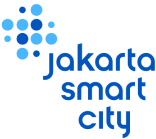Flood Control System Sensor in Jakarta
Great news! After only a year of development, Jakarta's Flood Control System has already won its first trophies. The innovation was selected as a winner of the ITU WSIS Prizes 2022 in the e-Science category and in the IDC Smart City Asia Pacific Awards 2022 for the Public Safety category. You might wonder, what is the Flood Control System and how does it work?
Here's the story…
For years, Jakarta has been hit by floods, but so far the Flood Control System, such as monitoring river flow and level, is still based on manual human observations. Thus the monitoring is limited and the coordination takes a long time. Now, with increasingly rapid technological developments, technology can now be applied to monitor and deal with floods in Jakarta. This latest Flood Control System comes with the sophistication of the Internet of Things (IoT) and Artificial Intelligence (AI).
This system was developed thanks to the collaborative work of Jakarta Smart City with the Jakarta Water Resources Service (DSDA) to optimize flood risk management in Jakarta. It will collect historical data in the form of water level, vibration, temperature and CCTV sourced from sensors and the Internet of Things (IoT). The sensors are installed in 178 pump houses and sluice gates in Jakarta. Incoming data from sensors will be analyzed to produce visualization of information regarding conditions, potentials, and predictions related to flooding in Jakarta. This data can also be the basis for policy makers in designing data-based policies so that flood management in Jakarta becomes more effective and efficient.
The Jakarta Smart City team visited the locations where the Flood Control System sensors were installed to provide an overview of the sensors owned by Jakarta. Wisnu from the Infrastructure team of JSC also gave a complete explanation below so that you are more familiar with Jakarta's sophisticated system.
Vibration and Temperature Sensor
This sensor serves to measure the vibration and also the temperature generated by the pump engine when operating. With this sensor, you can know whether the pump engine is on or not. In addition, this sensor can monitor the pump engine temperature when it is working, whether the pump is at normal temperature or not (overheated).
Water Level Sensor
This Water Level Sensor is used to determine the water level from time to time, especially the increase in water level when the water discharge has increased caused by rainfall or water delivery. This sensor works by using infrared which is fired towards the water surface and reflects it back to the surface sensor to find out how high the water level is at that time.
Water Flow Sensor
This sensor device is placed in a river where there is a steady current. This sensor has 2 funnels to enter and exit the water where each water entering the speed will be calculated by the sensor. Thus, this sensor can measure the speed of the water current flowing in the river discharge.
Rainfall Sensor
As the name suggests, this sensor functions as a rainfall gauge. Rainfall will be measured using a vessel with a measuring capacity of 1 ml.
CCTV
CCTV serves to analyze the peil scale of the water or the scale of measuring the water level on the walls of the water reservoir. This CCTV is equipped with Artificial Intelligence which will measure the alert level based on the water level that is read on the peil scale.
Box Panel
Inside the box panel there are two processing instruments that are important for recording and transmitting analog data obtained through sensors. First, there is I/O logic that will process analog data from sensors, this data is in the form of calculations and also the status of each recording sensor. The results of this recording are in the form of raw data which will then be uploaded using a data logger connected to the internet to be displayed on the Flood Control System dashboard.
Monitoring Jakarta Flood Risk in Real-time
With the Flood Control System, now the parameters to calculate the risk of flooding in Jakarta such as water level, rainfall, and other components can be monitored in real-time, so that it can simplify and speed up the flow of coordination in flood management.
In addition, the IoT sensors installed at various points in Jakarta are a long-term investment that can store historical flood data from time to time. With more and more data collected, the policy makers, now and in the future, can create policies or actions that are more targeted. With these various benefits, it is not surprising that this system, which is still in the development stage, has great potential in dealing with future floods and has succeeded in winning over the hearts of the judges in various international award events.
Let's continue to monitor the development of this Flood Control System via social media Jakarta Smart City at Instagramand Twitter. You can also get various information related to flooding in Jakarta at pantaubanjir.jakarta.go.id.



